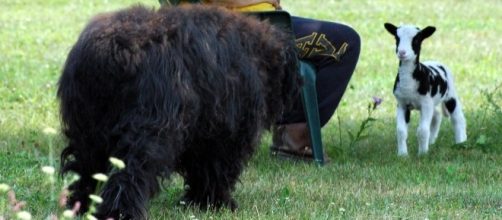Made famous in the public mind by the Bond film where Connery is sent to a health spa to eliminate all free radicals, they are thought by some scientists to be a major cause of aging, although this is still a matter of debate, not settled science. More research into animal genetics and diseases can benefit everyone, especially endangered species.
Great Dane puppies
I’ve personally raised Newfoundland Dogs and Great Danes and the latter sometimes seem to grow so fast that you can see changes from day to day, virtually from hour to hour which is understandable when you consider that they go from something you can hold in one hand to 80-plus centimeters inches and 40-plus kilograms at 9 months but the penalty for such rapid growth seems to be a short lifespan.
Other large mammals such as elephants who take nearly 10 years to reach full size, tend to live much longer than small mammals so it has been a scientific curiosity and puzzle that the largest canines die young with the shortest life spans while the smallest tend to live twice as long.
Free radicals
The preliminary research which was just published in “Science, Biology Plants and Animals,” is based on the comparison of the free radicals found in fast growing large breed puppies and biopsies from deceased large breed canines. The balance of free radicals with energy producing metabolic products in the old animals was normal compared to other breeds and other mammals but was very distorted in the puppies.
A cure for old age
This research is important because if it turns out that the excess production of free radicals in fast growing puppies is causing cell damage which reduces their life expectancy it may be possible to extend their lifespans through the use of supplements in their early lives. The same research may also shed light on the reasons for aging in humans.
Other theories
In nature it is thought that evolutionary progress has a lot to do with animal lifespans but the majority of dog breeds are only a few hundred years old and forced produced by humans so the natural evolutionary forces can’t be a factor.
Other researchers question the free radical theory, pointing out that some oxygen free radicals are essential for growth and life, while others believe that hormones like insulin-like growth factor 1 which trigger the fast growth to large sizes may have side effects which make the large breeds more susceptible to many diseases.

